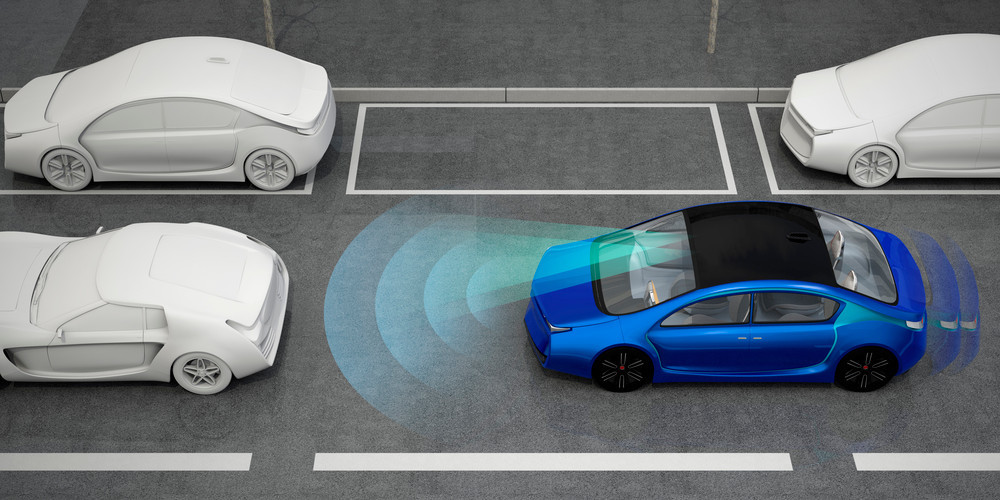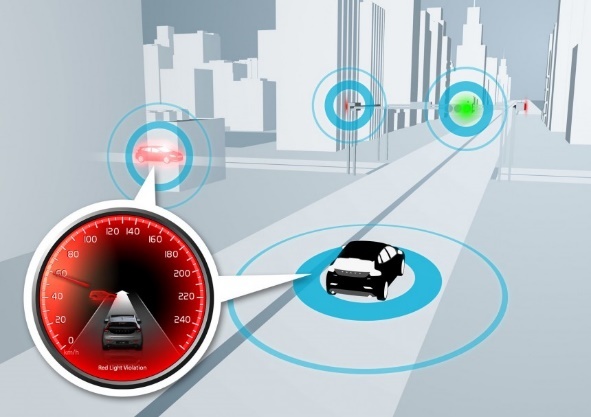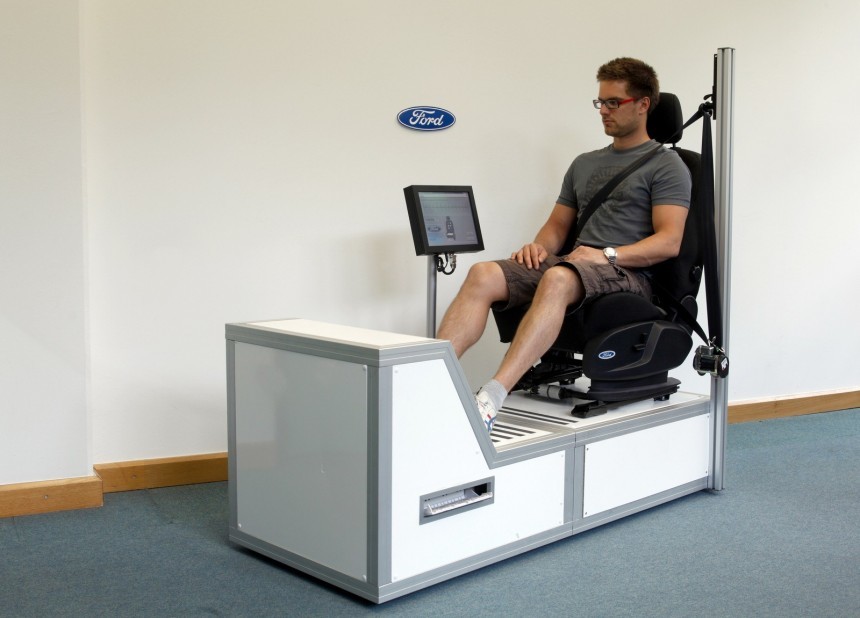Sociable cars on the roads of the future

The world community is looking forward to the appearance of unmanned vehicles on the roads. Too unusual concept - the machine that controls itself. At the heart of such vehicles are technology interaction of cars with each other and with the surrounding space. Soon, unmanned vehicles will know what happens around the corner; will warn each other about the dangers ahead; will be able to exchange data about the optimal speed of movement, not to stand at traffic lights, inform about the need to restructure, and at the same time will monitor the condition of their passengers. It sounds too good. But this is almost a reality.
Beginning of work
The first experiments on the interaction of cars with each other and with infrastructure (roadway, traffic lights, intersections, etc.) belong to the 1990th year. At the National Leadership Conference held in the US, the possibility of creating a “smart” road network capable of making driving in cars safer was discussed. In 1991, a large non-profit society, the ITS America (Intelligent Transportation Society of America), was founded, bringing together many private and public companies. Then similar organizations emerged in Japan (ITS Japan) and Europe (ERTICO-ITS Europe).

Thanks to the constant exchange of data between the vehicle and the infrastructure, it will be possible to predict maneuvers and avoid accidents.
')
Automakers have shown interest in this topic in about ten years. BMW and DaimlerChrysler have set themselves the task: to create by 2020 a unified information environment, including all drivers, cars and the external environment . But even the two giants of the auto industry such a project was completely beyond the power. Therefore, in 2004, a consortium of carmaker Car 2 Car Communication appeared (aka Vehicle2Vehicle, aka Car2X). Initially, it included only a few large companies, and now almost the entire global auto industry has gathered under its wing: BMW, Volkswagen, Audi, Daimler, General Motors, Ford, Honda, Mercedes-Benz, Hyundai, Nissan, Land Rover / Jaguar, PSA Peugeot Citroen, Toyota, MAN, Volvo, Tesla. Add the manufacturers of electronic components Bosch, Siemens and LG, public transport institutions, educational institutions and many other organizations. C2C is an international project, as cars around the world must communicate in the same language.
How it works?
Ideally, all participants in the movement and infrastructure should constantly, in real time, exchange large amounts of data. Based on them, the alert algorithm will be formed.

Hardware modernization of cars is small - the antenna and the compact on-board computer
At first glance, nothing particularly difficult: we install an antenna, a GPS module and a computer for data processing on each vehicle, analyzing the coordinates and motion parameters of the vehicle, the operation of its stabilization system, wipers, light devices, etc. But the thin spot in this scheme is software, which should process the incoming information extremely quickly and make the right decisions: to notify the driver with voice and messages on the display, and in exceptional cases - to influence the driving controls. It turns out that we are talking about creating artificial intelligence .
Some features of the Car 2 Car system
Another video demonstrating the capabilities of the C2C system. For example, a car with emergency lights turned on warns approaching cars so that they can avoid a collision or rearrange
Implementation
Despite the complexity of the task, the world's first communication system is already operational. It is created in Toyota, and received the name ITS Connect. The basis of the system is a cloud network that interacts with cars and allows them to exchange data. For example, ITS Connect is able to tune the work of the cruise control, warn drivers about approaching ambulances and police, and also helps to safely maneuver at intersections equipped with communication facilities.

Volvo Corporation, together with the Swedish Ministry of Transport, has launched an accident prevention project on icy roads. When a car gets on a lot of land, it informs the data center about this through the internal mobile Volvo Cars, and it notifies nearby vehicles about the dangerous area.

The communication system will be useful to both drivers and utilities.
Among the innovations Volvo is worth noting the collision avoidance system at intersections. When your car drives to the crossroads, the sensors and camera scan the oncoming lane. If a car is going to meet you, which can turn you across the line or drive into your lane, the system can automatically brake to avoid a collision.
Concern General Motors uses the C2C system to create a warning function of the danger of overtaking with the exit into the oncoming lane. Every driver knows how risky it is to maneuver, especially when you have to overtake a wagon with a trailer, because of which the review of the "counter" is closed.
Audi has developed the Travolution feature, thanks to which the display shows the distance to the nearest traffic light and the speed you need to hold in order to drive to the green signal. This improves order on the roads, saves gasoline and reduces exhaust fumes.

American Traffic Safety Management believes that such systems can not only optimize road congestion, but also prevent numerous accidents. Therefore, in 2016, the US Department of Transportation plans to require manufacturers to equip new cars with Car 2 Car systems.
Difficulties
Like any big undertaking, the C2C system suffers from implementation problems. For effective work of the system, it is necessary to equip with a wireless connection at least 20% of all vehicles with a fairly modern electronic filling. In this case, one set of equipment costs 300-500 dollars. It is also necessary to make “smart” infrastructure objects that do not have a number.
But even if tomorrow to equip all cars and motorcycles with the C2C system, then what to do with cyclists, pedestrians and animals that go onto the track is not clear. The system is not able to predict their appearance on the roadway, from its point of view, this will be an unexpected obstacle.


Motorcycles are one of the first candidates to install the Car 2 Car system, because they get into accidents 29 times more often than cars!
Finally, in our age of leakage and data loss, the issue of information security is of great importance. After all, wireless signals can be intercepted in bulk on the tracks. Therefore, developers will have to try to create a serious information security system.
Other systems of interaction of the car with the world
Mercedes-Benz has already introduced a new system for monitoring the roadway and suspension control: stereo cameras and sensors track bumps, and the computer adjusts the suspension and body position in a timely manner, greatly reducing shaking and roll. Today, almost all S-class flagship models can boast of this system.

Logically, the C2C system should be responsible for unmanned parking. For example, you came to work, went out, pressed a button, and the car itself parked in a pre-allocated place. Even cooler, if the car itself will go to look for an empty seat, guided by radar, cameras and GPS-navigator. A beautiful picture would be: hundreds of cars without drivers restlessly drive through the city center on Friday evening, trying to stumble somewhere while their owners relax after a week of work.
The first step has already been taken: some models of Mercedes-Benz and BMW cars can already be parked by remotely controlling using a mobile application.
A curious system offered by Ford. Its engineers equipped the driver's seat with six pulse-recording sensors. The car is able to recognize that the driver is now a problem with blood pressure, and even detect a heart attack. In a critical situation, the machine will turn on the alarm itself, stop and call an ambulance.

Jaguar Land Rover develops the Driver Monitor System (DMS) technology: the car detects the mimicry and direction of the driver’s gaze using sensors and video cameras. DMS analyzes head position, blink rate, breathing rhythm. Based on these data, the system can offer the driver, for example, to stop and rest. And if he suddenly fell asleep, the car will wake him up with a loud signal.

BMW also realized a curious idea: the transmission box receives route data from the GPS module and adapts to the particular road. The automat knows in advance that the driver will change the speed before turning, and will cautiously turn on the necessary gear. This feature is available on both the compact BMW 1 and the representative Rolls-Royce Wraith.
Of course, we still have a lot of innovations in the field of automotive communication. And although this direction of development has its opponents, progress cannot be stopped - soon cars will go without our help, and the roads will become much safer.
Source: https://habr.com/ru/post/395775/
All Articles